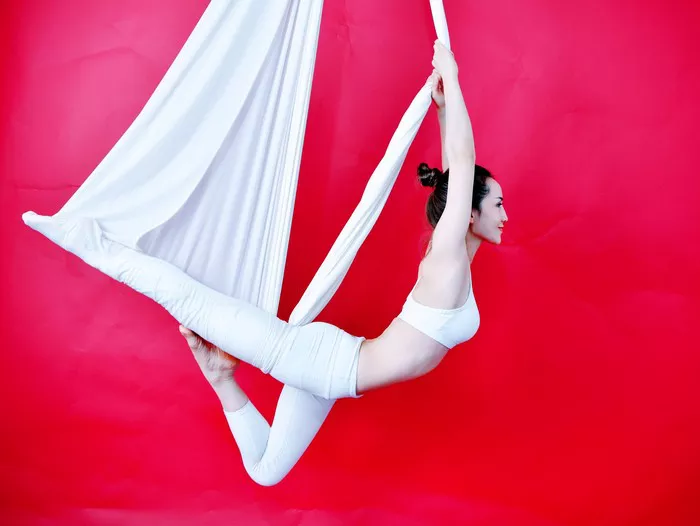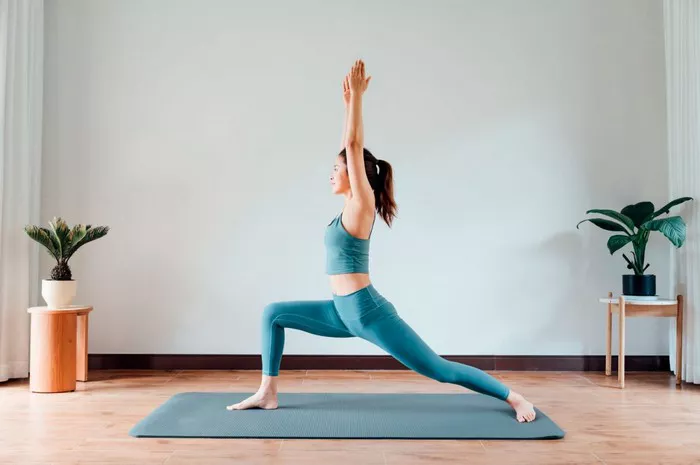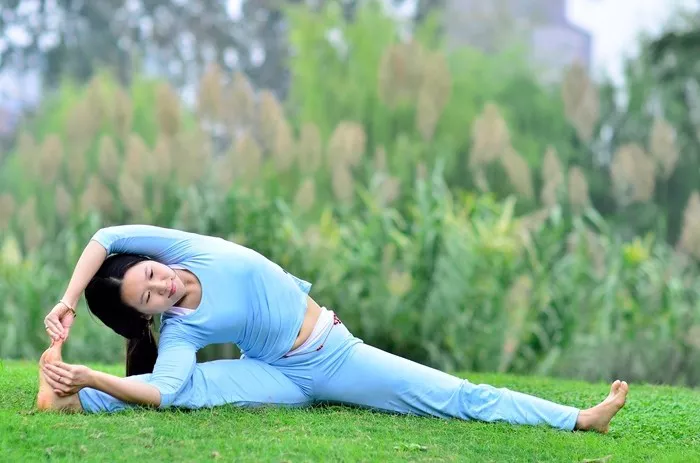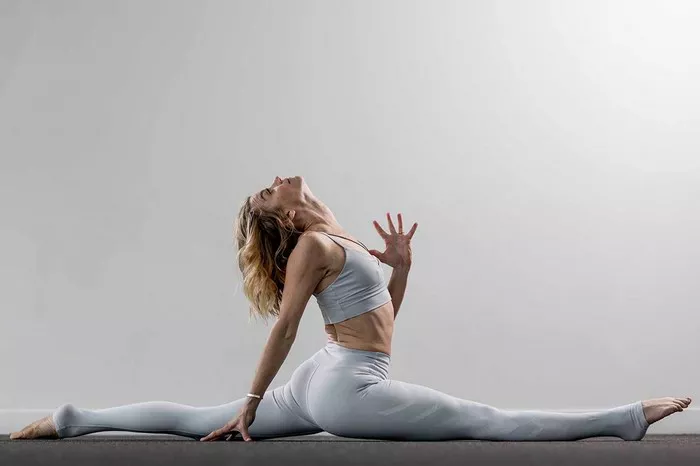Yoga swings, also known as aerial yoga hammocks or yoga trapezes, have gained immense popularity in recent years due to their versatility and ability to enhance traditional yoga practices. These specialized tools allow practitioners to explore yoga poses in a suspended state, offering unique benefits such as spinal decompression, increased flexibility, and improved core strength. Whether you’re a seasoned yogi or new to the practice, incorporating yoga swing poses into your routine can invigorate your practice and take your yoga journey to new heights.
1. Flying Pigeon Pose (Eka Pada Galavasana):
Flying Pigeon Pose combines the elements of balance, strength, and flexibility. Using the yoga swing for support, practitioners can deepen their hip opening and work towards achieving the full expression of the pose. This challenging arm balance helps build upper body and core strength while promoting mental focus and stability.
2. Inverted Pigeon Pose (Supta Kapotasana):
Inverted Pigeon Pose offers a rejuvenating stretch for the hips, thighs, and lower back. By reclining in the yoga swing with the legs elevated, practitioners can experience a gentle inversion that relieves tension and increases blood flow to the brain. This pose is particularly beneficial for individuals seeking relief from tight hips or sciatica discomfort.
3. Backbend Variation (Urdhva Dhanurasana):
Utilizing the yoga swing as a prop, practitioners can safely explore deeper backbends while experiencing spinal traction and support. This variation of Urdhva Dhanurasana helps open the chest, shoulders, and hip flexors, while also strengthening the back muscles and improving posture. Regular practice of this pose can enhance overall flexibility and cultivate a sense of vitality and openness in the body.
4. Floating Lotus Pose (Padmasana):
Floating Lotus Pose combines the meditative qualities of Padmasana with the weightlessness provided by the yoga swing. By gently suspending the body in the air, practitioners can experience a sense of lightness and ease while deepening their focus and concentration. This pose is ideal for individuals looking to enhance their meditation practice or explore the principles of balance and stability in a new context.
5. L-Shaped Handstand (Adho Mukha Vrksasana):
L-Shaped Handstand offers a playful variation of the traditional handstand pose, allowing practitioners to gradually build strength and confidence in their inversion practice. By using the yoga swing for support, individuals can safely explore the alignment and mechanics of the pose while developing upper body and core stability. This pose is an excellent way to cultivate courage, resilience, and a sense of accomplishment on the mat.
6. Hamstring Stretch (Supta Padangusthasana):
The yoga swing can be a valuable tool for deepening hamstring stretches and improving overall flexibility in the legs and hips. By reclining in the swing with one leg extended upwards, practitioners can gently lengthen the hamstrings while releasing tension in the lower back and calves. This pose is especially beneficial for athletes, runners, and individuals with tightness or discomfort in the hamstrings.
7. Seated Forward Fold (Paschimottanasana):
Seated Forward Fold is a calming and introspective pose that offers a deep stretch for the entire back body. When practiced with the support of a yoga swing, individuals can experience a greater sense of relaxation and release as gravity gently encourages the spine to lengthen and the muscles to soften. This pose is perfect for relieving stress, anxiety, and fatigue while promoting a sense of inner peace and tranquility.
8. Hip Opener (Eka Pada Rajakapotasana):
Using the yoga swing as a prop, practitioners can explore variations of Pigeon Pose that target specific areas of the hips and thighs. By reclining in the swing with one leg elevated, individuals can deepen the stretch in the hip flexors and quadriceps while maintaining proper alignment and stability. This pose is ideal for individuals working to improve hip mobility, alleviate hip pain, or release emotional tension stored in the hips.
9. Core Strengthener (Navasana):
Navasana, or Boat Pose, is a powerful core strengthening pose that targets the abdominal muscles, hip flexors, and lower back. When practiced with the added challenge of balancing in the yoga swing, individuals can intensify the engagement of the core while refining their balance and proprioception. This pose is excellent for building stability, endurance, and inner strength both on and off the mat.
10. Relaxation Pose (Savasana):
Savasana, or Corpse Pose, is a final relaxation pose that allows practitioners to integrate the benefits of their practice and experience deep relaxation and rejuvenation. When reclining in the yoga swing, individuals can fully surrender to gravity and let go of tension in the body and mind. This pose is essential for promoting relaxation, stress relief, and overall well-being, serving as a sweet conclusion to any yoga swing practice session.
Conclusion
Incorporating these top 10 yoga swing poses into your practice can elevate your yoga experience and unlock new levels of strength, flexibility, and mindfulness. Whether you’re seeking a challenging workout, therapeutic stretch, or meditative escape, the yoga swing offers endless possibilities for exploration and growth on the mat. Remember to listen to your body, practice with intention, and enjoy the journey of discovering the transformative power of aerial yoga.























